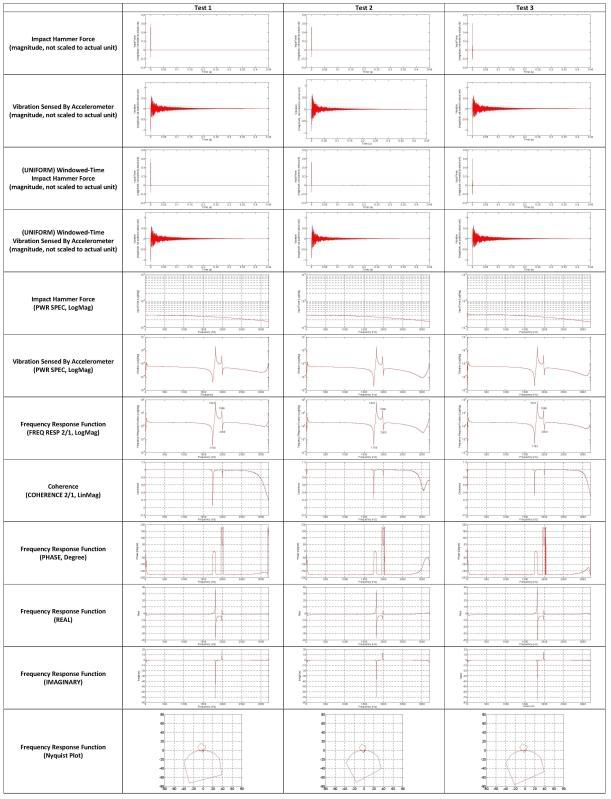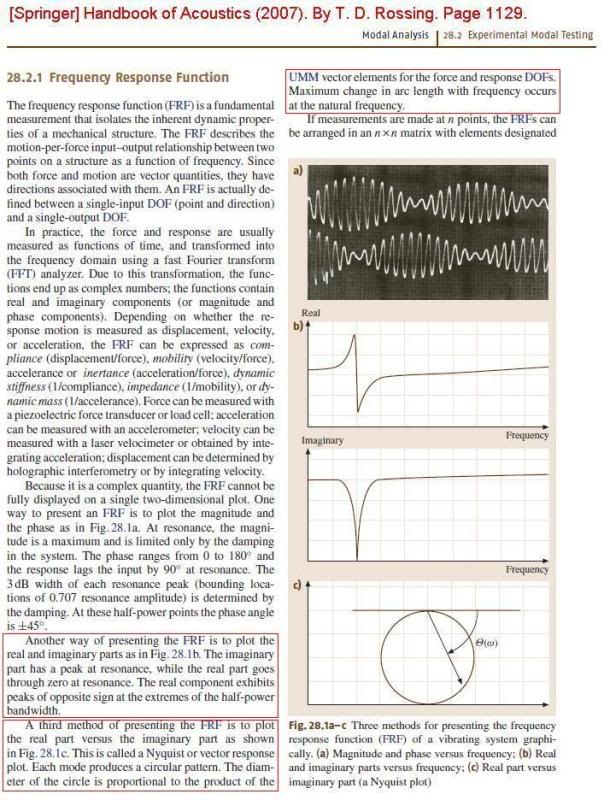onemilimeter
Electrical
I carried out impact hammer test on a motor end cap as shown in Figure 1. The hammer has a built-in force sensor. Hammer hits were repeatedly applied at around 'X' location. The vibration response was measured by an accelerometer (blue). The output of the hammer force sensor and the output of the accelerometer were connected, respectively, to Channel-1 and Channel-2 of a dynamic signal analyser (Agilent 35670A). Since the response died out (or decayed) quickly, UNIFORM windowing was used.
Three (3) tests were performed to check the consistency of my 'skill' to hit the hammer at 'X' location. Each test result was obtained by averaging the results of 5 hits.
Questions
[1] How many resonance peak do you find in the frequency range 0~3200Hz? In my opinion, there is only ONE (1) resonance peak at 1822Hz. Please correct me if I'm wrong.
[2] Kindly refer to coherence plot. What are the factors that you think might contribute to the 'dips' at 1750Hz (or 1754Hz) and 2000Hz? What's about the low coherence value after 2800Hz?
[3] Can we use phase, real and imaginary plots to help identifying the resonance peak? If YES, how?
[4] What kind of information that we can obtain from Nyquist plot?
[5] If the coherence value is low, can we use Nyquist plot to help identifying the reasons that cause the low coherence value?
Thank you very much
Fig. 1. Experimental Setup. Hammer hits were repeatedly applied at 'X'.

Fig. 2. Experimental Results. (Zoomable version is attached as 'Results.JPG').

Three (3) tests were performed to check the consistency of my 'skill' to hit the hammer at 'X' location. Each test result was obtained by averaging the results of 5 hits.
Questions
[1] How many resonance peak do you find in the frequency range 0~3200Hz? In my opinion, there is only ONE (1) resonance peak at 1822Hz. Please correct me if I'm wrong.
[2] Kindly refer to coherence plot. What are the factors that you think might contribute to the 'dips' at 1750Hz (or 1754Hz) and 2000Hz? What's about the low coherence value after 2800Hz?
[3] Can we use phase, real and imaginary plots to help identifying the resonance peak? If YES, how?
[4] What kind of information that we can obtain from Nyquist plot?
[5] If the coherence value is low, can we use Nyquist plot to help identifying the reasons that cause the low coherence value?
Thank you very much
Fig. 1. Experimental Setup. Hammer hits were repeatedly applied at 'X'.

Fig. 2. Experimental Results. (Zoomable version is attached as 'Results.JPG').





